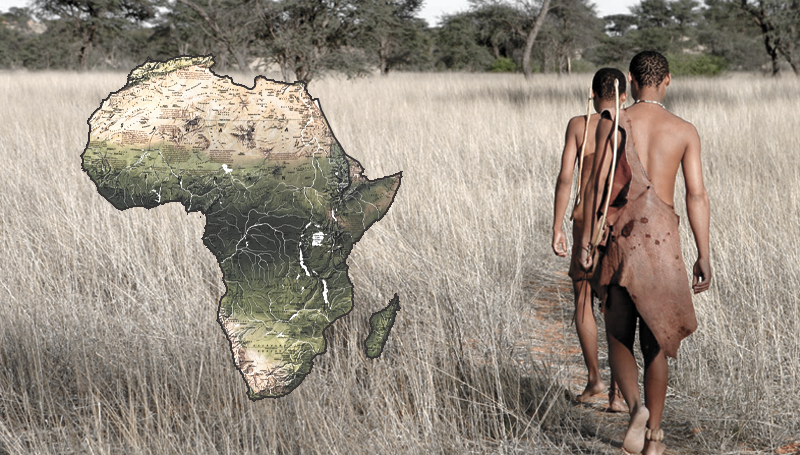According to a recent DNA study, all modern humans can be genetically linked to a single location in southern Africa 200,000 years ago. However, scientists claim that the study, which examined the DNA of live individuals, is not nearly thorough enough to identify the origin of our species.
According to population geneticist Aylwyn Scally of the University of Cambridge in the United Kingdom, who was not involved with the study, “I’m persuaded that southern Africa was an essential place for human evolution.” However, he claims that research on the DNA of current individuals cannot pinpoint the exact place of our forefathers. If all of our genetic ancestry at this time originated in a single small homeland, that would be astounding.
According to fossils and DNA, modern humans first appeared in Africa at least 250,000–300,000 years ago. However, because the earliest Homo sapiens fossils are spread out across Africa and the oldest ancient DNA comes from European fossils, researchers have been unable to identify a more precise origin.
For the latest research, scientists collected blood samples from 200 living individuals belonging to understudied genetic populations, such as foragers and hunter-gatherers in Namibia and South Africa who speak the Khoisan language family with click consonants. The investigators examined the mitochondrial DNA (mtDNA), a form of DNA passed down only through mothers, and contrasted it with the mtDNA found in databases from more than 1000 other Africans, predominantly from southern Africa. The samples were then all sorted by the researchers.
Hayes and her coworkers specifically contend that the homeland was in what is now northern Botswana’s Kalahari region. According to climatic data and models in the study, the Kalahari was a rich wetland between 200,000 and 130,000 years ago close to what would have been the largest lake in Africa, even though it is primarily desert and salt flats now.
The research team hypothesizes that until 130,000–110,000 years ago, when climate change created green corridors to the northeast and southwest, humans with the L0 mtDNA flourished in their native Kalahari. Some people left their native country and developed new mtDNA lineages, which the team can identify.
But according to evolutionary geneticist Sarah Tishkoff of the University of Pennsylvania, the mtDNA of live individuals alone is a subpar tool for tracing the history of ancient populations in Africa. MtDNA only traces one genetic lineage that has been passed down through generations from mothers to their offspring. According to Scally, the researchers’ findings could have been very different if they had studied the evolution of nuclear genes inherited from both parents or of Y chromosomes transmitted from fathers.
The team picked mtDNA, says Hayes, since it doesn’t get mixed up with other types of DNA during early fetal development. She claims that as a result, it may be used to directly link a tiny group of female ancestors who only existed in southern Africa to the evolution of modern humans. For our ancestors’ mothers, it serves as a time capsule. She claims that as men intermarried with other cultures, the majority of information on the Y chromosomes of Khoisan speakers vanished.
The female forebears of Khoisan speakers may not have resided in the same area 200,000 years ago, according to critics. It’s possible that the ancestors of the L0 lineage moved to southern Africa from somewhere else or were a member of a bigger group.
Populations have changed and mixed so extensively over the centuries, according to population geneticist Pontus Skoglund of the Francis Crick Institute in London, that examining DNA from live people is “extremely limiting when it comes to recreating what occurred to populations 70,000 to 200,000 years ago.” He claims that you need ancient DNA for it. or fossils with a good date.
 The African History Truly African
The African History Truly African

